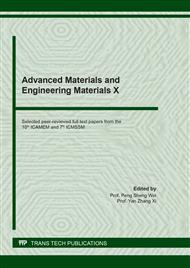p.453
p.458
p.464
p.473
p.480
p.485
p.501
p.506
p.512
Optimization of Machining Parameters for Improving Accuracy of Dimension and Shape of Bent Part in Rotary Draw Bending
Abstract:
This study dealt with the rotary draw bending method most used for tube bending and investigates how applied bending such as normal bending, using mandrels or pressing with booster have an effect on machining accuracy, focusing on dimensional defects due to springback and flat deformation to the transverse plane. The study used particle swarm optimization (PSO) algorithms to investigate the optimal machining conditions for improving the accuracy of dimension and shape of a bent part. The following findings were obtained: The springback during applied machining using a mandrel, or using a mandrel and booster together, is almost the same as during normal processing; The flattening near the center of the bend in applied processing using a mandrel, or a mandrel and booster together, decreases more than with normal processing at mandrel protrusion L ≥ 4 mm, and the maximum can be suppressed to approximately 0.15%; When the sum of the springback and the flattening is taken as the objective function and the minimum value is obtained, the optimal solution is around L = 7 mm.
Info:
Periodical:
Pages:
480-484
Citation:
Online since:
November 2021
Authors:
Keywords:
Price:
Сopyright:
© 2021 Trans Tech Publications Ltd. All Rights Reserved
Share:
Citation:


